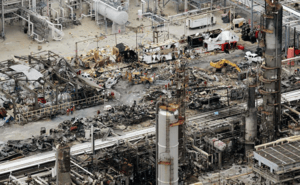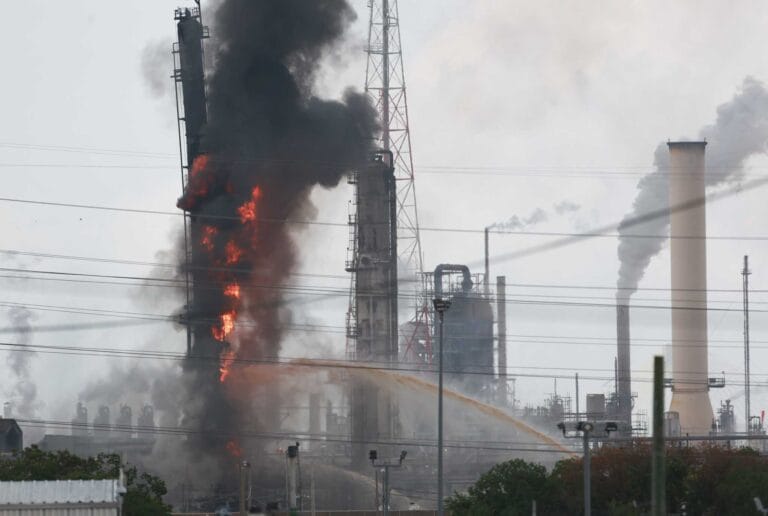In March 1993, the city of Baytown, Texas, was shaken by a large explosion at the ExxonMobil refinery. This event not only rattled the local community but also left a lasting impact on how industrial safety was perceived in one of the largest oil refining areas in the U.S. Here’s an easy-to-read breakdown of what happened in Baytown explosion 1993 4.3 Richter scale, why it mattered, and the long-term effects of this catastrophic event.
Background of Baytown
Baytown is a city in Texas, about 30 miles east of Houston. It’s well-known for its oil refineries and chemical plants, especially those operated by ExxonMobil. The city’s economy has long depended on the petroleum industry, making it one of the key players in oil production. Since the early 1900s, the ExxonMobil plant in Baytown has been a cornerstone of the local economy
The Explosion: What Happened?
On a day in March 1993, an explosion rocked the ExxonMobil refinery in Baytown. The force of the explosion registered 4.3 on the Richter scale, making it powerful enough to be felt miles away.
The explosion was caused by a gas leak inside the plant, where highly flammable gases like propane and ethylene are regularly processed. When these gases leaked and ignited, they caused a massive fireball and explosion. Fortunately, no workers were killed in the accident, but the damage to the plant and nearby areas was significant.

What Caused the Explosion?
The explosion was caused by a release of highly pressurized gases within the refinery. Industrial plants like ExxonMobil deal with extremely volatile chemicals. Any small error, such as equipment malfunction or human oversight, can lead to catastrophic outcomes. After the explosion, investigations revealed that this was likely due to mechanical issues, but no definitive cause was made public at the time.
The Impact on Baytown
Damage to Property: Many homes and businesses around the refinery were damaged due to the shockwaves from the explosion. Windows shattered, roofs were damaged, and people living nearby felt the ground shake as if there had been an earthquake. Power lines were down, and many residents lost access to electricity for several hours.
Community Disruption: Many residents were evacuated, and emergency responders quickly arrived to control the situation. The explosion led to widespread fear in the community, with people worrying about their safety living near the refinery.
Environmental and Economic Effects
The explosion released large amounts of pollutants into the air, making it an environmental concern for the area. Local authorities and ExxonMobil had to work together to assess the environmental damage caused by the chemicals and gases released during the fire.
Economically, the damage to the refinery led to millions of dollars in repairs for ExxonMobil. The plant was temporarily shut down, which affected the local economy that heavily depended on it.
What Changed After the Explosion?
After the explosion, ExxonMobil and other industrial plants in Baytown made significant changes to their safety procedures. The disaster was a wake-up call, showing how dangerous it can be to handle such volatile materials. New regulations were put in place to prevent similar incidents from happening again.
Safety Reforms: Industrial plants improved their emergency response plans, added more safety checks, and implemented stricter controls on how gases and chemicals are stored and handled. This made Baytown a safer place, but the explosion is still a reminder of the risks involved in such industries.
The Community’s Strength
Despite the explosion and the fear it caused, the people of Baytown showed resilience. The community came together to support one another and push for better safety measures. Local authorities ensured that ExxonMobil was held accountable, and the company took steps to compensate affected residents.
Learning from the Disaster: Safety Reforms
The 1993 Baytown explosion was a wake-up call for ExxonMobil and the entire oil and gas industry. This incident showed that even well-established companies could face dangerous risks. In the years following the explosion, several reforms were introduced to minimize the likelihood of future disasters.
Why This Event Matters Today
The Baytown explosion of 1993 is an important event in the history of industrial safety. It showed the importance of strict regulations and careful management of dangerous materials. It also highlighted the risks that come with living near industrial plants. Today, Baytown is a reminder of the balance between economic growth and safety.
Conclusion
The 1993 Baytown explosion was a significant event that shook the community both literally and emotionally. It was a powerful reminder of the dangers of industrial accidents. However, it also brought about important changes in safety regulations that continue to protect workers and communities today. By learning from incidents like these, industries can move forward, ensuring that safety always comes first.


4 Comments
Pingback: A Business That Will Vacuum Seal Food in Anaheim, CA - trendufeed.com
Pingback: The Biggest Technology Challenges of 2025 and How They Affect Your Industry - trendufeed.com
Pingback: How to Earn Passive Income with Cryptocurrency on GPLDose.com - trendufeed.com
Pingback: Shana Roberts: The Heart of Northbrook | How One Leader is Transforming Her Community - trendufeed.com